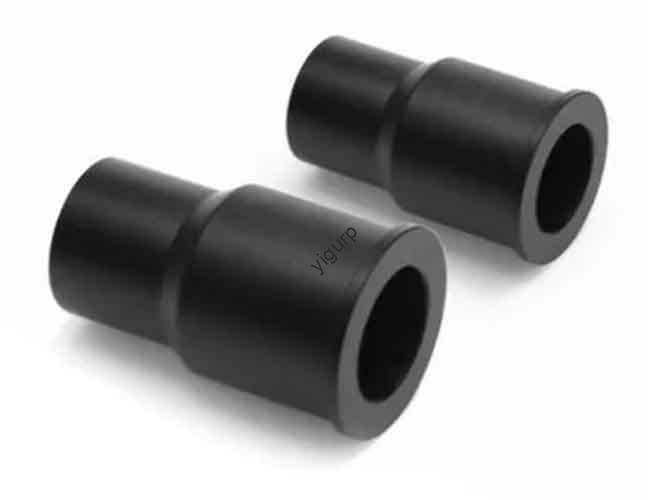When developing a water purifier, the prototype phase directly determines whether the final product meets user needs and industry standards. Among all prototype manufacturing methods, CNC machining stands out for its precision and reliability—but why is it indispensable for water purifier prototypes? This article breaks down key aspects of CNC-machined water purifier prototypes, from design to testing, to help you understand its value.
1. Core Design Principles for CNC-Machined Water Purifier Prototypes
A successful prototype starts with design optimization tailored to CNC capabilities. Below are three non-negotiable design focuses:
| Design Aspect | Key Requirements | CNC Compatibility Note |
| Functional Design | – Smooth internal water flow channels (no dead ends).- Tight filter element interfaces (for PP cotton, RO membranes, etc.). | CNC’s high precision ensures channel dimensions match filter sizes exactly. |
| Structural Strength | – Uniform shell thickness (to resist 0.3–0.6MPa water pressure).- Reasonable support structures (e.g., stiffeners). | CNC simulates real-use pressure via consistent material removal. |
| Maintainability | – Modular parts (removable panels, easy filter access). | CNC enables precise cutting of assembly clearances (avoids loose/tight fits). |
2. What Advantages Does CNC Machining Offer for Water Purifier Prototypes?
Compared to 3D printing or manual machining, CNC machining provides unique benefits that directly improve prototype quality. Here’s a side-by-side comparison:
| Advantage Category | CNC Machining Performance | 3D Printing Limitation |
| Accuracy | Dimensional precision up to ±0.05mm (ideal for fine holes like water inlets). | Typical precision of ±0.1–0.3mm (risk of leaky joints). |
| Material Versatility | Processes plastics (ABS, acrylic), aluminum alloy, and copper. | Limited to plastic filaments (poor for metal waterway tests). |
| Surface Finish | Supports post-treatment (spraying, plating) for mass-production simulation. | Rough surface (requires extra sanding; hard to replicate factory textures). |
3. Step-by-Step CNC Machining Process for Water Purifier Prototypes
CNC machining follows a linear, repeatable workflow to ensure consistency. The process is divided into 5 key stages:
- Model Splitting & Programming
Split the 3D model into machinable parts (e.g., shell, liner, filter holder). Select tools (high-precision ball nose cutters for curves) and optimize parameters (rotational speed, feed rate) to reduce material deformation.
- Roughing
Quickly remove 90% of excess material, leaving a 0.5–1mm allowance for finishing. This step saves time while protecting the final shape.
- Finishing
Use low-feed, high-speed cutting to achieve a surface roughness of Ra0.8–Ra3.2—critical for smooth water flow and user comfort (no sharp edges).
- Special Structure Treatment
- Threaded/mounting holes: Machined via spiral milling to prevent slippage.
- Complex curved surfaces: Achieved via 5-axis CNC for seamless waterway connections.
- Bonding & Assembly
Use epoxy or instant adhesive to simulate mass-production methods (e.g., snaps, screws), testing real-world assembly logic.
4. Material Selection Guide for CNC-Machined Prototypes
Choosing the right material directly impacts prototype performance. Below is a practical material-scenario match:
| Material Type | Applicable Prototype Parts | Key Features |
| ABS Plastic | Shell, control panel | Easy to polish/plate; low cost; mimics mass-produced plastics. |
| Transparent Acrylic | Water tank, internal viewing window | High transparency; allows observation of water flow. |
| Aluminum Alloy | Internal brackets, waterway joints | Lightweight, corrosion-resistant; ideal for metal part testing. |
| Nylon | Filter element card slots | Self-lubricating, wear-resistant; easy to test filter replacement. |
5. Post-Treatment & Functional Testing
A CNC prototype is only valid if it undergoes rigorous post-processing and testing to simulate real use.
Key Post-Treatments
- Grinding/Polishing: Removes knife marks (critical for plastic shells’ feel).
- Ultrasonic Cleaning: Eliminates residual cutting fluid (prevents waterway contamination).
- Simulation Treatments:
- Spraying (e.g., matte black/white) to replicate factory textures.
- Silk screening (logos, parameter labels) for user-friendliness.
- Plating (stainless steel luster) for metal parts.
Must-Perform Tests
| Test Type | Purpose | Pass Criteria |
| Assembly Verification | Check filter installation, pipe docking, and button/display usability. | Smooth filter replacement; clear display view. |
| Water Flow Test | Verify waterway efficiency (use dye/flow meter) and leak resistance. | No leaks at 0.3–0.6MPa; uniform water flow. |
| Weathering Test | Simulate long-term use. | No plastic discoloration (UV test); no metal rust (corrosion test). |
6. Yigu Technology’s Perspective on CNC Machined Water Purifier Prototypes
At Yigu Technology, we believe CNC machining is the cornerstone of reliable water purifier development. Unlike 3D printing, CNC’s ±0.05mm precision solves common prototype pain points—such as leaky waterways or loose filter slots—that could derail mass production. We often recommend clients prioritize CNC for core parts (shells, waterway liners) while using 3D printing for non-critical components to balance cost and quality. For example, a recent project using CNC-machined aluminum liners and ABS shells reduced pressure loss by 15% and cut filter replacement time in half. Ultimately, CNC prototypes don’t just test design—they accelerate the path from concept to market.
FAQ
- How much does a CNC-machined water purifier prototype cost?
The cost ranges from 500 to 3,000 yuan per unit, depending on part complexity and material. To control costs, focus on machining key components (e.g., shells) and use 3D printing for secondary parts.
- How long does it take to make a CNC-machined water purifier prototype?
Typically 5–15 days. For faster turnaround, split complex parts into smaller components and process them in parallel.
- Can CNC machining simulate all mass-production features of a water purifier?
Yes—CNC supports post-treatments like spraying, plating, and silk screening to replicate factory finishes. It also tests assembly logic (e.g., snaps, screws) that match mass-production methods.
